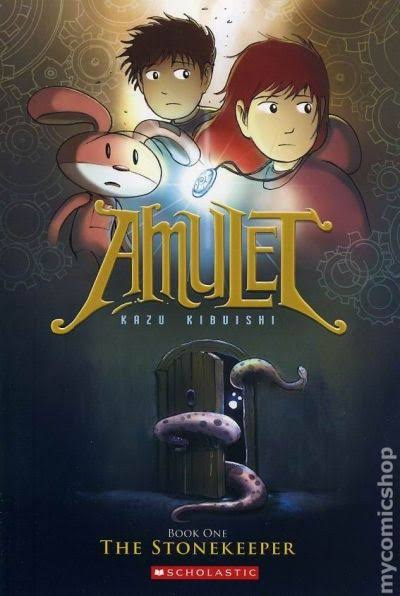Though marketed as a gateway to graphic literature for young readers owing to its magnificent art and imaginative world-building, Kazu Kibuishi’s Amulet series (2008–) still under its steampunk skies and great battles is a disturbing meditation on past trauma, the psychology of location, and the moral cost of heroism. Though some writers note how Kibuishi uses color, architecture, and silence as he probes the weights we carry and those we choose to drop, most critiques seek for overt excursions.
Grief’s building blocks: the house as character.
The story begins with a fractured family-in this instance, Emily Hayes’moving to the creaky, labyrinthine house of her great-grandfather, in whose architecture its emotional state would be reflected. Dusty rooms and dusty secrets, that literal chasm in the sitting room-a back door, an entrance through to lies in Alledia-an uncomplete part of the assignment of this murder leave this child in plain sight. Kibuishi loves pencil work; Stairways is inert, what coiling motion is it but the staircase-the doorframe keeps isolation and somewhere stretches dark-like regret unspeaking. This architectural uncanny is not just setting; it is a visual lexicon of Emily’s interior life, in which every hallway breathes, “Loss resides here.”
The amulet is, indeed the title, reduced to a mere “chosen one.” It is, however, an excellent narrative landmine. For Kibuishi, power—bestowing desires at a moral price—means agency and corruption. The amulet is not like most macguffins: it negotiates. When Emily commands it to “save” her mother, it complies by possessing her, twisting maternal protection into a puppet string. Kibuishi’s panels linger on the amulet’s eye-like gem, challenging readers: Is this a tool, a parasite, or a mirror of Emily’s escalating ruthlessness?
- Moral Architecture: Villainy as a Collapsed Bridge
- Amulet’s antagonists defy binary morality. The Elf King is no cackling tyrant but a bereaved father holding to myths of resurrection. Max Griffin, who began as a vengeful traitor, becomes the man consumed by remorse—his mechanical arm both literal and metaphorical baggage. Even Alledia’s decayed cities (the skeletal Cielis, the poisoned Gulfen) mirror civilizations constructed on hidden evils. Kibuishi’s world-building argues that “evil” is often the debris of collapse: What happens when grief, ambition, or love calcify into obsession?
- Color as Emotional Contagion
Kibuishi’s palette operates as an unspoken narrator. These early books are swamped by the blues and mossy greens of melancholy, colours that obviously look like stagnation and secrecy. As Emily gets tougher, oranges and blood reds come into sharp focus, not least on battlefields, but where her amulet holds her most decisive influence. Yet the strongest moments occur when colours go completely white- the blanket of snow silences The Stonekeeper’s Curse; or the dead white nothing which is where she finds herself within the ghost of her ancestor. Such greyscale breaks are less of a break than an emotional peak that leaves the reader sitting in the cost of survival. - Violence of Silent Panels
He skillfully arms empty space. The two-page spread of Emily’s airship in an endless sky, adrift, communicates existential scale and underscores weighty leadership when it is placed into perspective through her tiny figure. Wordless sequences are indeed more potent than dialogue—such as Navin’s trembling hands after the battle, Leon Redbeard’s sidelong glances of doubt. Many of the quietest panels before its loudest explosions remind one that trauma does not always roar; sometimes it is the silence before the scream. - Legacy as a Haunted Blueprint
This is Emily’s story: she does not take her fate. She takes it apart instead. Her family history-a history of Stonekeepers-is more of a curse than a heritage; it is a blueprint of doomed protectors. Kibuishi contrasts her parallel storyline with the Elf Prince, Trellis, who also battles his paternal legacy. For their parallel stories, it raises another question: Burn the blueprint and rebuild from the ashes of our ancestors’ failure? Or is it impossible? The answer lies in the changed landscapes of the series: it is not Alledia as she was but a tentative sketch of something new .
Conclusion: Gravity of Memory
It stands not for its legend but for its unwillingness to let its readers avert their gaze from the wreckage, of worlds and families and selves. Kibuishi’s wizardry is found in his facility to make architectures weep and color schemes betray and silence scream. In a world of escape fantasy, Amulet is that harsh reminder of a time; some portals don’t lead you to adventure, but to tombs we bear within.

